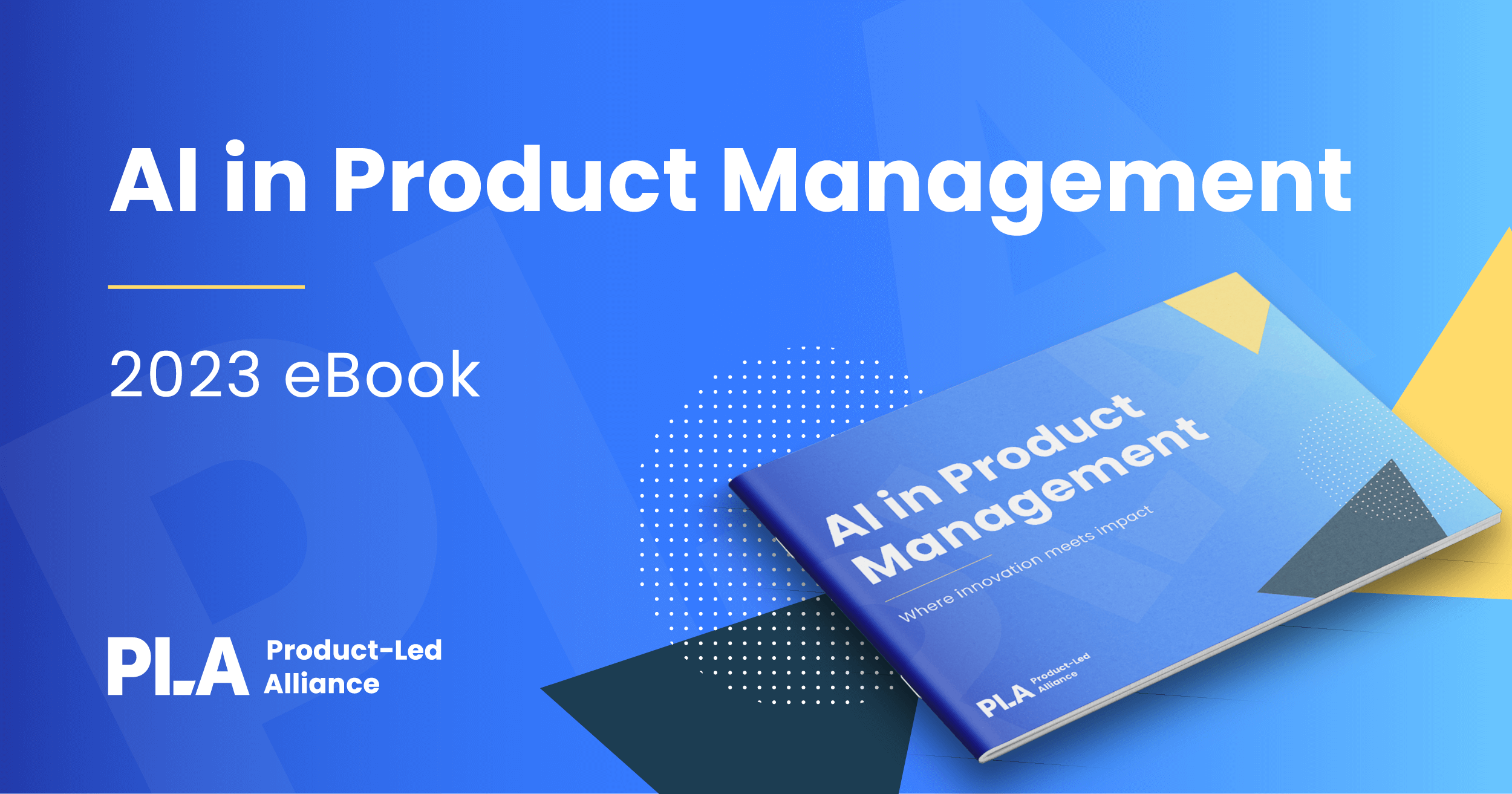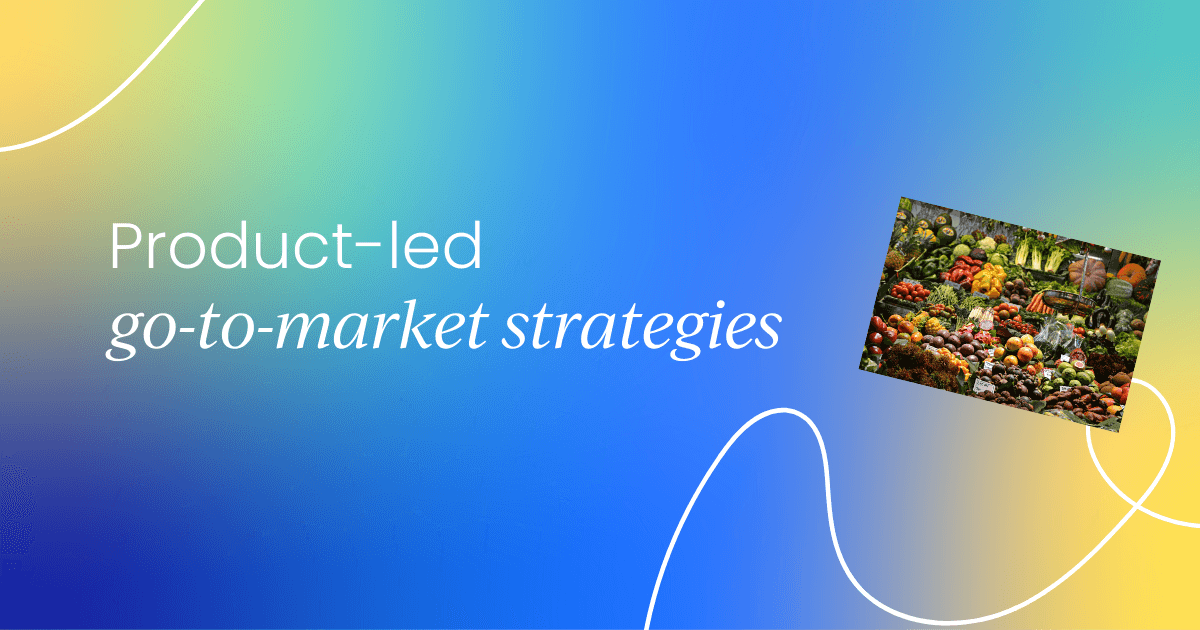Customers are more empowered than ever, which means traditional go-to-market (GTM) strategies are being replaced by innovative approaches like product-led GTM. If you're a product manager, marketer, or business leader looking to stay ahead, embracing a product-led go-to-market strategy could be your golden ticket.
But what exactly is product-led GTM, and how can it benefit your business? Let's dive into the details, unpack the key principles, and see why it's gaining momentum.
What is product-led GTM?
Simply put, a product-led go-to-market (GTM) strategy places the product at the center of every stage of the customer journey. Rather than relying on traditional sales-led approaches—where marketing and sales teams take the front seat in driving customer acquisition—the product itself becomes the primary vehicle for attracting, converting, and retaining users.
With product-led GTM, potential customers interact directly with the product, often through freemium models or free trials, allowing them to experience its value before making a purchase decision. This user-first approach puts control in the hands of the customer, and if executed well, can lead to lower acquisition costs, shorter sales cycles, and higher customer satisfaction.
Let's summarise the key benefits of product-led GTM:
- Lower customer acquisition costs
- Shorter sales cycles
- Higher customer satisfaction
- Increased user engagement
Why shift to this strategy?
The rise of product-led GTM is not just a trend; it's a response to significant changes in buyer behavior. Modern customers prefer to test products before committing, and they expect a seamless, self-service experience. Here's why companies are making the switch:
- Customer-centric experience
Today's customers want control over their buying journey. A product-led GTM approach caters to this desire by giving users the freedom to explore the product at their own pace. Instead of being "sold" to, they get to experience the product's value first-hand, making their decision based on their interaction rather than marketing promises.
- Lower Customer Acquisition Costs (CAC)
Traditional marketing-led strategies often require a significant budget for advertising, content marketing, and sales outreach. With a product-led GTM approach, your product becomes your best marketing asset. By offering a freemium model or free trial, you allow users to explore your product on their own, reducing reliance on expensive sales teams and marketing campaigns.
- Faster time to value
The quicker a potential customer experiences the value of your product, the faster they’ll move through the sales funnel. Product-led GTM accelerates this process by giving users instant access to the product. This cuts down on the time spent in lengthy sales cycles, leading to quicker conversions.
- Scalability
Once you build a self-service model, it can run with minimal intervention from sales or customer success teams. This allows you to reach a larger audience with fewer resources, making it easier to grow and expand without drastically increasing overhead.
How does product-led GTM work?
To successfully implement a this approach, there are several core components you need to focus on. Let’s take a closer look at these essential elements:
- Freemium or free trial offering: At the heart of product-led GTM is the concept of "try before you buy." Offering a freemium version of your product or a time-limited free trial gives users the chance to experience your product's value firsthand. The key here is ensuring the free version is valuable enough to engage users, while premium features should be compelling enough to drive conversions.
- Product-led onboarding: A critical aspect is the onboarding experience. You want users to hit the ground running and understand your product's value quickly. Focus on building an intuitive onboarding flow that highlights key features, offers in-app guidance, and nudges users towards those "aha!" moments—where they realize just how beneficial your product can be.
- Product-Qualified Leads (PQLs): In a traditional sales-led approach, marketing-qualified leads (MQLs) are handed off to sales teams. In product-led GTM, the equivalent is product-qualified leads. These are users who have already engaged with your product in a meaningful way (e.g., by hitting a key milestone within a free trial). Identifying PQLs allows you to focus your sales efforts on users who are most likely to convert, leading to higher success rates.
- In-product upsells: Upselling happens within the product itself. As users explore your product, you can guide them toward premium features or higher-tier plans with strategically placed prompts or suggestions. The idea is to seamlessly integrate upsell opportunities without interrupting the user experience.
- Data-driven decisions: Because users interact directly with your product, you have access to valuable data. You can track user behavior, identify friction points, and use this data to make informed decisions on product updates, onboarding improvements, and marketing campaigns. The better you understand how users engage with your product, the more effective your strategy will be.
Best practices for implementing a product-led GTM strategy
Ready to shift to this strategy? Follow these best practices to ensure a smooth and successful transition:
Start with a clear value proposition
Before implementing this approach, make sure your product’s value is crystal clear. If users can’t quickly understand what your product does and how it benefits them, they won’t stick around. Invest time in refining your messaging and make sure it aligns with your product’s core functionality.
Leverage in-app communication
Your product is your main channel of communication in a product-led GTM strategy. Use in-app notifications, tooltips, and messages to engage users at key moments. For example, when a user reaches a milestone or engages with a premium feature, consider prompting them with information on upgrading or exploring more advanced features.
Continuously optimize your product
Your product isn’t static—it’s constantly evolving. Use the data gathered from user interactions to inform future product decisions. Whether it’s adding new features, improving existing ones, or refining the onboarding process, optimization is key to keeping users engaged.
Align sales with product data
In a product-led GTM model, the role of sales teams shifts from traditional cold outreach to a more consultative role. Sales teams should be armed with data on user behavior, helping them engage PQLs who are most likely to convert. This data-driven approach ensures that sales efforts are focused where they’ll have the most impact.
Common challenges and how to overcome them
While the benefits of product-led GTM are compelling, the transition isn’t without challenges. Here are some common hurdles and how to navigate them:
- User churn
With a product-led approach, you might experience higher user churn, particularly if your free version doesn’t offer enough value. To mitigate this, focus on delivering continuous value, improving onboarding, and offering in-app guidance to keep users engaged.
- Misalignment between teams
A successful product-led GTM strategy requires tight alignment between product, marketing, and sales teams. All departments need to be on the same page regarding goals, user data, and the customer journey. Regular communication and a unified strategy will help break down silos.
- Striking the right balance in your freemium model
One of the biggest challenges is figuring out how much value to give away for free without cannibalizing paid conversions. The key is offering enough in the free version to hook users but making your premium features so compelling that they’ll want to upgrade.
Measuring the success of your product-led GTM strategy
How do you know if your strategy is working? Keep an eye on these key metrics to measure success:
- User activation rate: How many users experience the core value of your product?
- Conversion rate: What percentage of users move from the free version or trial to a paid plan?
- Customer Acquisition Cost (CAC): Are you acquiring customers at a lower cost than before?
- Churn rate: How many users are sticking around after their initial experience with your product?
- Product engagement: How often are users interacting with your product? Are they engaging with key features?
Adopting a product-led GTM approach is more than just a trend—it’s a strategic shift that puts your product at the center of your growth efforts. By offering a customer-centric experience, reducing acquisition costs, and accelerating time to value, you’ll be setting your business up for success.
FAQ
- What is a product-led go-to-market (PLGTM) strategy?
A PLGTM strategy puts your product at the center of how you attract, convert, and retain customers. Instead of relying on traditional sales and marketing tactics, your product is the main driver of customer acquisition, expansion, and retention. - How does a PLGTM strategy differ from a traditional go-to-market strategy?
In a traditional approach, sales and marketing lead the charge—think heavy campaigns, outbound emails, and sales calls. With product-led GTM, your product is what pulls users in. They get a taste of the value through a freemium model, free trials, or a low-friction onboarding process. Once users experience the product’s benefits, they’re more likely to stick around and upgrade. - Is PLGTM right for every business?
Not necessarily. PLGTM works best for businesses with a product that delivers immediate value, especially for SaaS companies. If your product requires a lot of hand-holding or has a longer sales cycle, PLGTM might not be the best fit—or you’ll need to tweak it. But if you have a self-serve product that users can easily adopt, PLGTM can be a game-changer. - Do I still need a sales team with a PLGTM strategy?
Absolutely! Even though PLG is product-first, a sales team can still play a crucial role, especially when you’re looking to close bigger deals or manage enterprise-level customers. Sales in a PLGTM world tend to be more consultative, helping users who’ve already interacted with the product and need guidance on scaling their use.
Are you ready to dive headfirst into the exciting realm where AI and product management collide?
Introducing our brand-new AI Product Manager's eBook – your ultimate guide to navigating the ever-evolving landscape of product management in the age of artificial intelligence.




 Follow us on LinkedIn
Follow us on LinkedIn




